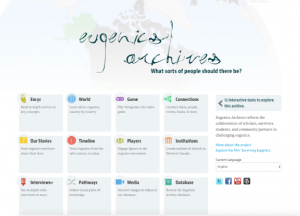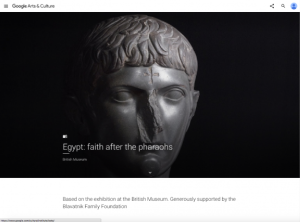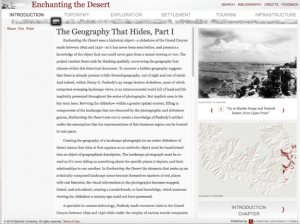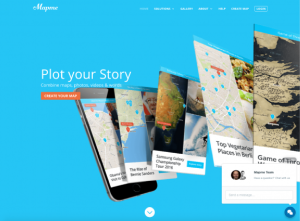Research and Education
Back to Top
|
 |
|
The Public Domain Review
|
Arts |
|
Whenever any form of media is no longer protected by copyright law, it enters the public domain. The Public Domain Review is dedicated to collecting and curating this material in one place. Launched in 2011, the online journal and not-for-profit project features numerous images, complete books, audio clips, and videos. These materials range from the peculiar to the poignant, providing insight into both everyday life and extraordinary oddities. One can watch a 1916 adaptation of 20,000 Leagues Under the Sea (the first movie filmed underwater), view a gallery of beards, or read Queen Victoria's teenaged diary. Yet, The Public Domain Review offers more than a collection of intriguing ephemera. The project also publishes long-form essays that contextualize and analyze public domain material. In addition, the site features a monthly Curator's Choice series, where curators from around the world share public domain material from their institution's collections. Interested readers may subscribe to an email Newsletter to receive bi-weekly notifications about the latest article and the most interesting content featured in the Review. [MMB] |
|





|
|
 |
|
Reading Like a Historian
|
Social studies |
|
Historians use primary sources to form and analyze questions about the past. These sources can also be challenging to integrate into middle school and high school social studies classrooms; oftentimes, they include archaic language and require a certain amount of background information to be of any use. As a result, primary sources tend to be relegated to supplementary reading lists in traditional history textbooks. The Stanford History Education Group wants to change that. With the Reading Like a Historian series, the Group has compiled 73 lessons about U.S. history and 37 lessons on world history that center on a diverse collection of primary sources, including letters, maps, photographs, and videos. Each lesson incorporates materials that enable middle and high school students to situate and evaluate historical events and actors, including select primary sources, concise background readings, and graphic organizers. These lessons are carefully scaffolded, highly interactive, and encourage young historians to connect sources from the past with enduring issues that persist in our own time. A Quick View of each lesson is available to all site visitors; those interested in downloading lesson plans, PowerPoint presentations, or original documents will need to create a free account. [MMB] |
|





|
|
 |
|
NISE Network
|
Science |
|
Nanoscience - the study of how materials take on unique properties when observed at the smallest of scales - has become increasingly important in all areas of science, with profound impacts on medicine, technology, and engineering. However, many members of the public have a hard time understanding this new and exciting field. Enter the National Informal STEM Education Network (NISE Network). Comprised of 14 museums, universities, and professional organizations, the NISE Network produces a variety of materials designed to help scientists, educators, and museum professionals engage the public with nanoscience. Detailed K-12 lesson plans are provided, as well as activities for more informal settings, such as after-school programs. Thanks to the inclusion of videos and detailed lesson descriptions, educators can implement and adapt these activities with ease. All materials are free to download and readers may subscribe to receive a monthly Newsletter to find out about community news, upcoming events, and more. [MMB] |
|





|
|
 |
|
Digital Media and Learning Research Hub
|
Educational Technology |
|
The Digital Media and Learning Research Hub is an international research center based at the University of California Humanities Research Institute at UC Irvine. Funded by the MacArthur Foundation, the DML Research Hub has three stated goals: to examine how digital technology has altered education (including formal and informal educational sites); to support innovations that use digital media to enhance education; and to research and promote best practices for facilitating education through digital media. The Hub is especially interested in how digital media can enhance civic participation. On its website, visitors can read about the team's research and watch video presentations about how to incorporate digital media into instruction. Visitors will also find a curated set of free and open resources, culled from websites, webinars, publications, and blog posts. Entries from the collaborative blog, dmlcentral, are most prominent. Authored by a diverse group of academics, blog entries include reflections about online youth activism, disparities in access to digital media, and how digital media is shaping conceptions and experiences of adolescence. New digital media tools for educators are also regularly profiled. [MMB] |
|





|
|
 |
|
Expii
|
Mathematics |
|
Expii functions as an interactive series of math and science textbooks. Po-Shen Loh, a math professor at Carnegie Mellon University, created Expii with the aim of making math and science instruction more interactive and collaborative. The resource can be navigated in one of two ways: users may either search for a specific topic, such as "quadratic equations" or "Newton's first law," or they may use the Topic Map for game-like exploration. This second approach reveals the many connections between math and science and allows users to create their own journey through a variety of subjects, such as algebra, physics, astronomy, and calculus. Topics are accompanied by short explanations of concepts and often include complete practice problems. Notably, Expii is a crowdsourced learning site; contributors from around the globe can add their own definitions, create new problems, or update problem explanations. [MMB] |
|





|
|
 |
|
 |
|
Eugenics Archives
|
Social studies |
|
During the first half of the twentieth century, eugenics, or the idea that communities could "improve" the "human race" by selectively determining who could have children, was bolstered by - and, in turn, reinforced - racist, ableist, and xenophobic ideas. The Eugenics Archives, written and maintained by a large team of Canadian and American scholars, researches the history and contemporary significance of eugenics in Western Canada. One of the major strengths of this project is how well it illustrates the many ways that eugenics was at once a social, legal, and academic movement. On this website, one can explore an encyclopedia of key concepts from the eugenics movement, view an interactive map that illustrates how eugenics developed in individual countries, and learn about the Aboriginal Residential Schools that First Nations people were forced to attend. Visitors will also find a powerful collection of interviews with Canadians who survived forced sterilization. Although a difficult read at times, the Eugenics Archives provides a comprehensive and important examination of how eugenics was perpetuated and its lasting consequences. [MMB] |
|





|
|
 |
|
Egypt: Faith After the Pharaohs
|
Religion |
|
The British Museum recently hosted Faith After the Pharaohs, an in situ exhibit depicting religious life in Egypt from 30 BCE (when Augustus defeated Cleopatra and Mark Antony and made Egypt a province of the Roman Empire) to 1171 CE (when Salah al-Din took power and became the sultan of Egypt). During the 1,200 years between these two events, the region saw both great diversity and great transformation in regard to religion. Egypt became majority-Christian in the fifth century CE, and then majority-Muslim in the tenth century. This Google Arts & Culture site includes spectacular images from the British Museum's exhibit, which, together, paint a vivid picture of Egypt during this dynamic time period. Visitors can view a bronze figure of the falcon-headed god Horus, an original manuscript that explains how one Egyptian community was converted to Christianity, and a collection of sandstone gravestones. By clicking on these photographs, visitors can gain additional information about each artifact. The website also includes videos, where experts explain different aspects of religious life in historic Egypt. [MMB] |
|





|
|























